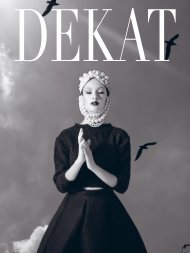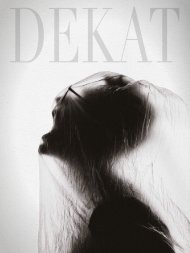1
You also want an ePaper? Increase the reach of your titles
YUMPU automatically turns print PDFs into web optimized ePapers that Google loves.
The Gates of Paradise was conceived during a time when Blake experienced intense visions, making it difficult for him to focus on his commercial work. Two versions were released.<br />
The first, with minimal text foretitled For the Children, was issued in 1793. An 1818 reissue, with the foretitle For the Sexes, added three plates and explanatory verses. The work is in<br />
the tradition of 17th century emblem books and Protestant literature for children. These works were often very moralistic cautionary tales but Blake subverted the genre with a dark<br />
depiction of the life of man from the embryo to the grave.<br />
There are shocking images of a woman pulling mandrake babies from the earth and a bearded figure cutting the wings of a child with the caption:<br />
As Aged Ignorance he clips the wings of his own joys.<br />
Blake illustrated Milton’s work more than any other author and was particularly obsessed by Paradise Lost. He made one plate for each of the 12 books of the poem. Milton was also<br />
the hero of Blake’s own epic poem Milton: A Poem in Two Books, in which the poet returns to earth and enters Blake’s body. One of the two narrative arcs of Paradise Lost follows<br />
the fall from grace of Adam and Eve.<br />
The scene Helen recreated depicts the moment Eve is seduced by the serpent and eats the forbidden fruit while Adam has his back turned. In the poem, Adam later eats the fruit<br />
knowingly as he fears being separated from Eve if she committed the sin alone. The two later receive forgiveness from God but are expelled from paradise and God becomes<br />
invisible to them. Notably, the biblical theme of forgiveness and redemption was an obsession shared by both Blake and Helen. According to Imrie Ross, Helen marked numerous<br />
passages in her Bible and most of them were related to healing, redemption, forgiveness and the sacrifice Jesus made for sinners.<br />
The chrysalis baby is from the frontispiece of the book. It has been interpreted by some as symbolising the possibility of human consciousness. The shepherd-like prophetess Helen<br />
reproduced as a cement figure is the last emblem in the book. The image is captioned:<br />
I have said to the Worm: Thou art my mother & my sister.<br />
This is taken from Job 17:14 in the Bible. The image represents Tirzah, a figure in Blake’s personal mythology who is the creator of the physical body and, therefore, the mother of<br />
death.<br />
200 FOR THE LOVE OF LIGHT<br />
FOR THE LOVE OF LIGHT 201





